Top 10 Tips For Touring Without A Touring Motorcycle
The yearning to visit distant locations by way of motorcycle doesn’t need be answered atop a two-wheel Winnebago. Any old motorcycle, with a little help from the aftermarket, will suffice. Although, an active imagination and a stalwart disposition doesn’t hurt. Oftentimes, the desire to go far and wide is bestowed upon those of youthful age with more time than money. If you’re a part of this category, or simply prefer to share the experience with the non-touring bike that you own, here’s a few useful tips for making the trip more enjoyable.
On a related note, we recommend checking out Evans Brasfield’s Top 10 Motorcycle Hacks.
10. Aftermarket Seat
It’s not just non-touring bikes that sometimes need a little help cushioning your derriere. The firmness and thickness of a motorcycle seat’s foam is a personal preference of extreme variation. Width is also a consideration, and all three must sometimes be compromised depending on your inseam. Finding one on which to spend multiple, consecutive miles is no easy task, but definitely worth the reward. Thankfully there’s a wide selection of aftermarket seat manufacturers from which to choose, even if it’s only an accessory seat-topper pad.
9. Windscreen
Some wind in the face is pleasant. A continuous 80-mph frontal blast from departure to return is not. Even the smallest, teardrop shield is capable of providing significant amounts of protection. And wind isn’t your only nemesis. A good shield can also help protect against cold and rain. So, if your non-touring bike is devoid of wind protection, buy some. If your bike’s already equipped, consider expanding on what you have, perhaps by the addition of a Laminar lip.
8. Tires
If your cross-country trip is to be spent aboard an R1 or some other race-bred sportbike, swap out your sticky-compound tires for a set that compromises between grip and longevity. A good set of sport-touring tires have more grip than you’ll probably need and last longer, plus they also increase safety by way of providing better water dispersal – something you’ll need when it rains, because it will rain.
7. Bar Risers
Sticking with the sportbike-made-sport-touring-bike theme, unless you’re a glutton for punishment, you’ll want to reduce the racer crouch by increasing clip-on height. The easiest way in which to perform this adaptation is by installing a set of aftermarket risers such as Convertibars, Helibars or some other product. By allowing a more upright riding position, bar risers reduce the amount of weight on wrists and ease lower back strain. The longer your trip, the more important this small comfort becomes.
6. Creature Comforts
* Ear Plugs and/or Satellite radio/phone charger/
To override the white noise between your ears or save yourself the monotony of humming the same tune, repeatedly, for what seems like eternity, invest in some modern creature comforts. Technology, such as Bluetooth communication devices, make it easy to enjoy music, communicate with a passenger or other riders, or hear GPS navigation. There are a ton of motorcycle-related smartphone apps to help plan, execute and enjoy your trip. In terms of safety, there are various crash-alert devices that’ll notify loved ones in case of an emergency.
Cardo Scala Rider Q3 Multiset Communicator Review
Bushnell SolarWrap Mini And SolarWrap 400 Review
5. The Right Gear
Hot to cold, wet to dry, and back again. Motorcycle touring will drag you through multiple microclimates, oftentimes within a single day. Research the seasonal weather patterns for the areas you’re travelling through, then obtain the correct gear. You’ve limited carrying capacity and can’t have the perfect gear for each weather occasion, so choose wisely. Consider wiring your bike to power electric handgrips and/or riding gear if venturing into cold climes.
Turn On: How To Install Switched Accessory Power To Your Motorcycle
4. Roadside Repair/Maintenance Kit
A lot of touring bikes have amenities such as shaft drive or a Tire Pressure Monitoring (TPM) system to help ease long-distance travelling. Non-touring bikes often do not. Chain driven motorcycles require lubrication while on the road. Tire pressures need to be checked. Then there’s always the possibility of incurring a flat tire, electrical short or some other mishap that can either leave you stranded, or, with the right set of tools, be nothing more than a small inconvenience. Hence the importance of carrying with you a small and light, yet comprehensive, repair/maintenance kit.
3. Throttle Lock
Pictured is the poor man’s cruise control. Cost: $0. Installation time: two minutes. Then there are the actual engineered products from companies such as Throttlemeister, Vista Cruise and others. Choose what you will, but certainly make a choice. You can squirm in your seat, put your feet in different locations but without one of these your right hand is forced to apply constant pressure – which gets numbingly uncomfortable when riding numerous interstate freeway miles. To learn more about the poor man’s throttle lock check out the coat hanger cruise control.
2. Carrying Capacity
Luggage – hard or soft – bungee cords, cargo nets, etc., are necessary for non-touring bikes with no factory-included carrying capacity. One of my personal favorites for touring on a non-touring motorcycle is the Ventura Bike-Pack System. The multi-use system can carry the waterproof bags, but also to it can be attached a sleeping bag, a tent, even firewood. But nothing’s 100% water-tight, so consider wrapping clothing in trashbags prior to packing your luggage. Bringing a nylon clothesline is recommended, because, eventually, something’s gonna get wet.
1. Improvisation
When it comes to motorcycle touring, the best skill to have is knowing how to improvise. Like the coat hanger throttle lock in #3, improvisation will get you through many troublesome situations. Whether it’s stuffing newspaper into your summer riding gear to stay warm because you didn’t realize how drastically desert temperatures can drop at night, or purchasing a small fan from a local hobby shop to cool an overheating rectifier on a 1987 Honda VFR750F, knowing how to cope with a situation while far away from the comforts of home is consummate to any great motorcycle touring trip.
A former Motorcycle.com staffer who has gone on to greener pastures, Tom Roderick still can't get the motorcycle bug out of his system. And honestly, we still miss having him around. Tom is now a regular freelance writer and tester for Motorcycle.com when his schedule allows, and his experience, riding ability, writing talent, and quick wit are still a joy to have – even if we don't get to experience it as much as we used to.
More by Tom Roderick



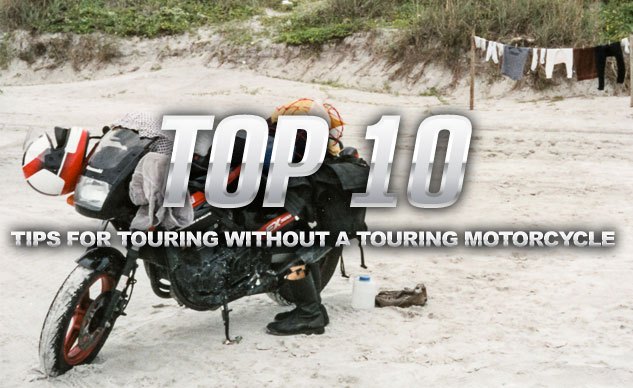
















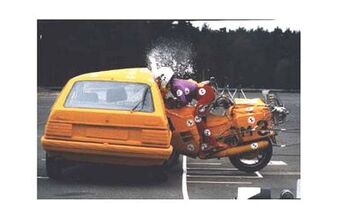










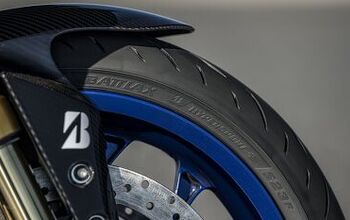

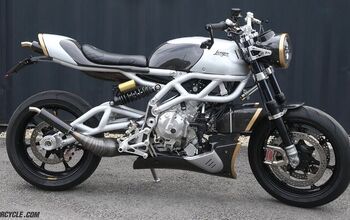
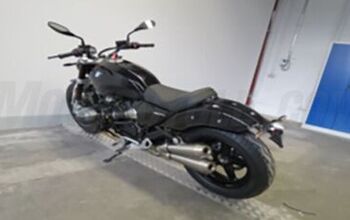


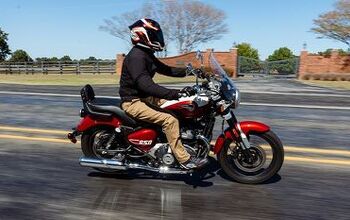
Comments
Join the conversation
LOL...where can I get the purple blanket hoodie in #5?
There may be the option of buying a very second hand cruiser to do the job and sell it/give it away at the journeys end...May even spice up the trip along the way;)
Nice top ten list.Got to get that superwedge!Anyone got one for sale?